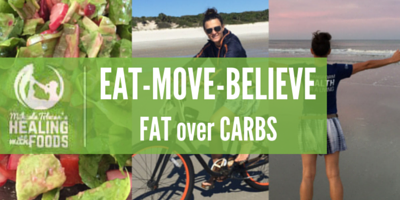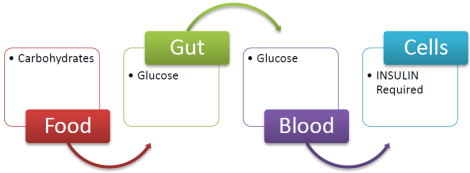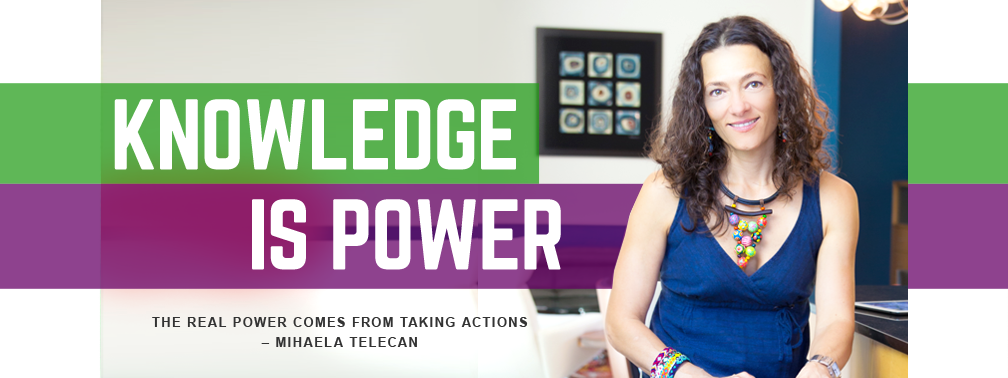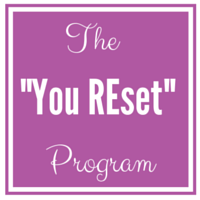hi

Fat over Carbs: adapting to burn fat as fuel for maximum mental and physical power.
This is part II of Mind Over Body, Fat Over Carbs article, my MS Bike Ride Story and what I learned from it. If you missed part I, click here to read it first before diving into this one.
Now, just like with part I, grab a “cuppa” sit back and enjoy the “ride.”
You probably know or heard that carbohydrates are a quick and easily released source of energy for the body. That’s 100% true. The question is…
If I didn’t consume any carbohydrates as quick fuel, what was my body using as source of energy during the ride? How I was able to ride 85 miles in almost 5 hours without eating? Mind you, most people don’t sit at their desk without eating every 2 or 3 hours.
The answer is “Fat as Fuel.” That’s the power of fat adaptation. That’s what I call “FAT over CARBOHYDRATES!”
My body used fat as fuel. I am a “FAT Burning Machine” and you can become one too!
If you are fat adapted I would love to hear your story, how you got there and what amazing things are you able to do in a fat burning state. Leave a comment below and let me know how do you test your fat adaptation? What’s your endurance limit and how did you get there?
If you never heard about fat adaptation, keep reading. I’ll explain what that is and how you can become fat adapted.
Evolutionary speaking, all humans are fat adapted! Metabolically speaking however, today most people are carbohydrate adapted or carb burners with the ability to revert to the fat burning metabolism.
So, let me take you back to a biochemistry and physiology lesson.
When you learned about human nutrition you probably learned that carbohydrates are the preferred source of energy for the body. Fat can also be used as a source of energy and proteins are the least favored energy source.
So, carbohydrates and fats are the preferred source of energy over protein. Carbohydrates are relatively quick and easy used to generate energy for the body given that your body releases an adequate amount of insulin and there is no insulin resistance. Insulin resistance is when you produce insulin, but it’s unable to perform its job of facilitating the transfer of glucose from the blood stream to the cells of the body and you are left with elevated blood sugar levels.
Lack of insulin and/or insulin resistance, will translate into elevated blood sugar levels and the person affected by this will be diagnosed as diabetic or pre-diabetic.
Let’s take a look at how carbohydrates are metabolized in our body. (mini biochemistry lesson)
Carbohydrates that we ingest from food are converted into glucose in the gastric tract. Glucose gets from the intestine into the blood stream. To be transferred from the blood to the cells of the body, it requires insulin. The insulin’s role is to facilitate the transfer of glucose from the blood stream into the body’s cells to be used as a source of energy. Insulin is an anabolic hormone that promotes growth and fat storage.

Most people today are carb adapted or carb burners, meaning their metabolism is well adapted to using carbohydrates as the preferred source of energy, while it has forgotten how to use fat as fuel. This is no surprise because our modern diet, the Standard American Diet (SAD), is extremely high in carbohydrates and predominantly refined ones.
Take a look at a typical breakfast for example:
- Toast, orange juice, milk, dry or cooked cereal, bagel, muffins, etc.
Those are all high glycemic (refined) carbs. They result in a sugar overload, followed by a surge in insulin (which is the normal response of the body), in order to help process the sugar. Chances are eating like this, day after day, you’ll start storing most of those carbs as fat (you’re not going to burn them while sitting at a desk and moving your fingers really fast on the computer keyboard). Even if that’s not the case, it’s still not good for your overall health, you can and will eventually wear down your pancreas. (Pancreas is the glad that produces the insulin)
The typical “modern man” breakfast it’s so high in carbs that you might as well have a birthday cake instead and enjoy it too.(Ha,ha)
With our modern life style today, unfortunately, we expend very few calories. We have plenty of energy-saving devices. Think escalators, elevators, remote controls, washers, dryers, drive through, etc. Hence, we expend very little energy while we fuel like we’re running marathons and doing iron man races every day. But we’re doing neither.
Modern living is the opposite of ancestral living.
Let’s have a comparative look.
Ins versus Outs
Modern: Plenty of FOOD with Minimal MOVEMENT
Ancestral: FOOD Scarcity with Lots of Movement
Macro nutrient composition
Modern: High Carb FOOD (Processed, Refined, Chemicalized) “Food like Substances”
Ancestral: Lower Carbohydrate FOOD (100% Whole Foods)
Availability, Access & Lifestyle
Modern: FOOD easily accessible, readily available with no need for Human Energy Expenditure (HEE) to acquire combined with access to Multiple Human Energy Saving Devices and a lifestyle away from nature and sun
Ancestral: FOOD scarcity, going from feast to famine with high demand for HEE to acquire food and a lifestyle with extreme high intensity Human Energy Output in nature, sun, earth, water
Let’s get back to our carb loaded diet and its effect on health, wellness, physical and mental performance. What does it mean in real life?
It means when you eat a high carbohydrate meal two or three hours later, you’re crashing. Your body doesn’t remember quickly and easily how to use fat as energy, so you crash, you experience extreme hunger, mood swings, irritability, weakness and so on. You get ravenous hunger, you need to eat otherwise you can kill someone. You know what I’m talking about, right? You get irritable and start to lose concentration, or if you’re exercising, you need to stop and refuel.
The more carbs you eat, the hungrier you get, you store fat, gain weight and or can’t lose weight. Are you constantly hungry and constantly craving for “something else” to give you energy and to satisfy you?
You know you’re NOT a FAT burner if you
- are unable to go 4 or more hours without eating and get the signs of low blood sugar (shaky, sweaty, weak, irritable, headache)
- have trouble concentrating
- have mood swings
- have fluctuating energy
- have uncontrollable food cravings and/or hunger
If you feel that way, I hope you understand that’s primarily because you have extreme fluctuations in your blood sugar from very high to very low which in real life translate into fluctuations in energy, mental focus, cravings and hunger.
Let’s see why that is.
To explain what takes place in the blood when you eat a high amount of carbohydrates all at once, I will use the illustration of the ocean.
The Perfect Hawaiian Surfing Waves versus Bahamas Ocean.
The Perfect Hawaiian Surfing Waves is what you get when you eat a high carb meal: high blood sugar levels followed by a significant drop. That’s not what you want your blood sugar levels to look like. From High to Low. If they look like that, it means you’re struggling with all of the above mentioned things.
High sugar = surge of energy
Low sugar = crash in energy, hunger, cravings, etc.
You want your blood sugar levels to be steady and low, just like a beautiful, calm, relaxed Bahamas Ocean. That’s when you have steady energy, balanced mood, no food cravings, and no extreme, uncontrolled hunger. That’s when you turn the fat burning metabolism on and you become a FAT BURNER.
Steady low blood sugar = sustained energy
Unfortunately, carbohydrates as a source of energy are short-lived. They don’t provide you with long-term sustained energy.
So, how do you get to have sustained energy and keep blood sugar low and steady? How do you effectively start using FAT as Fuel?
Change what you eat and how you eat! Your body will respond to it.
Remember, I talked in the beginning about the fact that our body can effectively burn fat for fuel? That’s how our ancestors lived and survived as a species here on planet Earth.
Can we mimic an ancestral diet today? Let’s take a look at it again.
I’m going all the way back to the hunter and gatherer era. Those days humans didn’t have easy access to food. They basically went from feast to famine. They ate very local, seasonal, whatever and whenever they were able to hunt and gather. So, hunting meant eating wild-grass-fed animal food with its natural fat content, in a non-processed form and gathering meant eating wild edible plants available to them seasonally. They most likely ate fruits as their prime source of carbohydrates and that was limited by location and season (amount, variety and availability). They pulled roots and ate herbs seasonally as well.
Their diet was extremely different from our modern industrialized, chemicalized diet today and their lifestyle was extremely different from ours, as well. They ate less food overall, with a completely different macro-nutrient composition.
Today most of our calories are coming from carbs, back then carbs made up the least of their calories; it was the fat that sustained them for long periods of time. They were able to reproduce and survive harsh environments using fat as their main source of energy.
How was this possible and can we do it today?
Yes, it is and I’ll explain how.
Our body (genetically speaking) is not different from that of our ancestors. We are “hunters and gatherers” living in the 21st Century Environment.”
Our genetic material remained the same, but our environment changed drastically.
Many of our modern, chronic, degenerative conditions (syndrome x, diabetes, cardiovascular, obesity, cancer, etc.) are in part the result of us being “dressed up cave-man” wearing high heels, living and operating in an environment to which we haven’t genetically and physiologically adapted yet. Oh boy! I’m getting too philosophical in here…let me go back to the fat burning metabolism and how to reactivate it NOW in your awesome body.
Remember, I talked about carbs and fat as being the preferred source of energy for the human body? Carbs are always preferred over fat. So, if you eat carbs and fat at the same time, the body will preferentially first use the carbs as your source of energy. And that’s what modern man does today.
Carb loading, is the recipe for weight gain, food cravings, fluctuating energy, mood swings and so on. That’s driving the carb burning engine, not the fat burning one.
In the absence of carbs however, the body will use fat as energy. Fat used as fuel can come from:
- external (dietary) source, when you eat a meal that contains fat, but no carbs
- internal source, the fat you have stored in your body (your adipose tissue). This takes place when you are fasting, or if you follow for an extended period of time, a lower carbohydrate meal plan.
Our body has a built-in ability to convert fat into fuel and fat turns out to be a long-lived source of energy, unlike carbs. When you operate on fats (as fuel), when you turn on your fat burning metabolism, you become, unstoppable! A “fat burning machine”.
- You get to do endurance stuff like riding for 5 hours, 85 miles without the need to eat, or rest.
- You get to work for long stretches of time with sustained mental focus, without crashing.
- You can control your hunger, you have happy stable moods and you’re “detached” from food and forget what food cravings are.
You experience a new way of living, doing, being.
How is this possible and why is your trainer or nutritionist not telling you about this? (some do)
We all have the ability to burn fats via a process called “beta-oxidation”. (Biochemistry mini lesson again).
When your body does not receive the quick, easy release form of energy from the carbohydrates (glucose), it starts to remember how to turn fat into energy, just as it did in the Stone Age.
The body wants to survive; it has built-in a survival mechanism and starts using it as soon as it feels threatened.
No glucose coming in? No problem. I can burn the fat and turn it into energy in the form of ketone bodies (survival). Meanwhile, the liver will produce just enough glucose to prevent hypoglycemia (survival and homeostasis).
How does the liver produce glucose?
- First, by converting the glycogen back into glucose (glycolysis) and
- Second (if needed) by converting non-glucose food sources into glucose in a process called gluconeogenesis. Yes, some amino-acids coming from protein digestion and the glycerol coming from lipid metabolism will be used to produce glucose, just enough to maintain the optimal level your body needs to function.
Remember the calm Bahamas Ocean? Yes, your body can keep it there without you having to think or worry about it.
How does the liver convert fat to energy?
- Your body knows how to tap into the adipose tissue in your body and convert it back into energy, this time in the form of ketone bodies (acetoacetate, beta hydroxyl butyrate and acetone) in a process called beta-oxidation.
You may hear that ketone bodies can’t be used as a source of energy by the brain. That’s not true. There are only 3 cells in the body that require 100% glucose to function and these are: retina of the eye, red blood cells and liver parenchimatic cells. The cells of our body differ in what they use as fuel. Let’s have a look.
Muscle (skeletal):
- at rest prefers fat as fuel (except for when insulin is high and it will uptake glucose to help normalize blood glucose levels)
- during prolonged exercise it still prefers fat; it;s estimated that above 60% of maximum effort glucose or stored glycogen will start to be used progressively more.
Heart muscle:
- the preferred fuel at rest is fat
- during exercise lactate from the circulation is burned to CO2 and water. Lactate it’s preferred over glucose.
Liver (hepatocytes):
- a very busy organ uses fat as fuel.
Brain:
- it can burn glucose or ketones but it’ can’t burn fat.
With regards to the other 3, remember your liver will always supply glucose via glycogenolysis and gluconeogenesis.
NOTE: If you suffer from liver disease, mitochondrial disease, diabetes or other metabolic disorder, then you may not be able to maintain normal blood glucose levels.
Before making any dietary and exercise changes in your life, please make sure you check with your trusted healthcare provider.
Fat adaptation doesn’t happen overnight, nor in 1 week. It takes time for your body to re-learn how to effectively burn fat.
To turn on your fat burning metabolism, to up-regulate the enzymes that are involved in beta-oxidation, you need to give yourself a minimum of 3 weeks of transition, from a carb burning metabolism to a fat burning one. From a high carbohydrate diet to a lower carb diet.
I invite you to start looking at the fat on your body as “saved energy for times of famine”, “your reserves in times of need”. Now, here in developed countries such as the U.S., the chances of famine are rather slim. Don’t wait for the time of need, as it may not come. Look at your body. Do you have lots of saved energy? Start using it. Here’s how:
- change the macro-nutrient composition of your meals,
- timing of meals, and
- the amount of food you eat.
Doing this will force your body to use the “saved energy” you’ve got. You can trick your body to think there is famine and force it to use the stored adipose tissue as energy. This will assure fat loss and with proper training, you’ll maintain muscle mass, (get to optimal body composition) while achieving an incredible mental and physical energy and peace with food; all the things I’ve been talking about so much.
It’s within your reach! You have the built-in systems to do this.
You MUST want to do something different, so you can get different results.
When you reach fat adaptation, your body can very effectively switch from carb burning to fat burning based on what energy substrate it has available (in other words, depending on whether you eat carbs or fat). That’s the beauty of becoming fat adapted. That’s the advantage you get.
If you eat carbs:
- you burn carbs as fuel,
- store them as glycogen and the remaining as fat
If you don’t eat carbs (or limit carbs):
- you effectively burn fat as fuel, so you always have ample, sustained energy, keep your body lean (reach the body composition you’ve always dreamed).
You are probably wondering how you can become fat adapted and how long will it take? Come on Mihaela, tell me what to do! Enough with the theory.
The answer is that it depends on your individual body. However, on average, it takes a minimum of 3 weeks to effectively start burning fat, to have that sustained energy, to stop craving sugar, and to experience less hunger. The first 3 weeks are HARD! It becomes easy and you start feeling its effects on your mental power and physical performance about 6 months into it. It’s a gradual process, the longer you stay on it, the more you feel its benefits.
Now, let’s get your fat converting engine on!
Change what you eat, when you eat, how much and how often you eat!
Most likely you’ve been told in order to keep your metabolism fast and your blood sugar stable, you need to eat often, every 2-3 hours. This may work for some people, but it’s not getting them to become fat burners.
There is another way of stabilizing blood sugar and burning fat and that can be done by:
- fasting and intermittent fasting (IF) combined with a lower carbohydrate, higher fat and moderate protein diet
- avoiding high glycemic impact carbohydrates (those that are responsible for the “Perfect Hawaiian Surfing Waves”),
- staying away from gluten
- minimizing intake of all grains and starches
Let’s break it down:
What you eat:
- whole foods,
- most of your carbohydrates will come in the form of the “rainbow” of colorful non-starchy vegetables,
- low glycemic fruits, (not too many, they contain sugar. It’s natural, but still sugar),
- unprocessed fats: from olives and olive oil to grass-fed butter & gee with coconut oil in between,
- moderate protein from grass-fed, pastured raised animals. I suggest calculating your protein needs based on your lean body mass and factor in the activity level-to come up with what’s the best amount for your individual needs. I personally use 1 gram of protein per kilogram of lean body mass,
- nuts and seeds
At the end of this article you’ll find a downloadable 1-day meal plan that meets the above criteria. Print it and use it to help you get started.
For a whole week menu plan with all the recipes, including video recipes, shopping list and bonus training videos on real life meal planning, I have a digital product you can purchase for only $39. You can learn more about it here: Phase III of the YRP.
When/how much to eat:
Start practicing intuitive eating; follow your body’s queues for hunger and satiety. That will help you with the when and the how much/how often you eat. I will give you some suggestions here; however, you need to follow your body’s unique needs.
- Set as a goal to limit your food intake to an 8 hour window out of the 24 hour day. This is known as a form of intermittent fasting. I’ve been practicing this for over 3 years now and it’s done miracles for me and what used to be my unstable blood sugar. To achieve this you will need to go in gradually, from where you are now (may be 14 hours if you eat from 7 am all the way to 9 pm) to where you want to get (e.g. 11 am to 7 pm). Be gentle with your body. Don’t jump in or you’ll end up quitting. You can move your breakfast up or dinner down by 1 hour each week until you get there. See what works for you, and see if 8 hours is where your body thrives or may be 6, or perhaps 9. Find your magic number. Mine fluctuates from 6-8, sometimes it is 4.
- Implement some personal life rules: (e.g. no food 3 hours before bed time, no eating or drinking anything until you drink 2 big glasses of water first thing in the morning, no seconds if you finish eating (in under 20 min) a plate of food, etc.)
- Avoid the habit of grazing. Allow your body to recognize hunger again and just eat only when you’re hungry.
- Free yourself from rules imposed on you by others. (e.g. Breakfast is not the most important meal of the day. The most important meal of the day is the one which you are hungry for.)
If you’d like support with implementing IF into your daily lifestyle, I created a digital program that can assist you with that. Phase II of the YRP, will give you the structure you need to successfully implement IF. It also includes a 3-day liquid fast, followed by transition to solids, with video recipes and meal plan/recipes. You can check it out here.
I personally practice IF (6/18 or 8/16) daily and eat a lower carb diet based 100% on whole foods. I follow the GAPS (Gut and Psychology/Physiology Nutrition Protocol), which eliminates all processed foods, sugar, gluten, all grains and starches. It’s a very clean way of eating, with the inclusion of meat and bone broth, fermented foods, organ meats, lots of non-starchy vegetables (the Rainbow) and some fruits.
This way of eating, not only supports healing of the body (I started eating this way to heal my body), but it supports incredible physical and mental performance. And this is how it becomes possible to ride 85 miles in one stretch, to have endurance for four hours and forty-four minutes in the absence of food, to keep a good steady pace and not require fueling. If my body was not fat adapted and would rely on glucose as its primary fuel, I would have to stop and refuel with carbs more than once, or not finish the ride.
(This is a side story. I had a guy riding next to me and he asked me when I ate the last time, as he was eating a mini waffle. I answered “last night”. He said “no, no, like this” and he pointed to his high carb snack. He was intrigued by my answer (we were around mile 65 or 70) and he was concerned that I was going to faint and he’d have to rescue me:) I told him not to worry. I ate my dinner the night before (no carbohydrate in there either) and I’m fine, as I’m fat adapted. I don’t think he understood what I was talking about…Well, it turns out that he stopped at the last rest stop before the finish line, while I kept riding, and finished the 85 miles in one stretch, no external fuel, no break, and way ahead of him.)
It was amazing! If I didn’t experience it, I would probably have had a hard time believing it. Yes! Do you have a hard time believing it?
I hope this all makes sense to you and is something you will try for yourself. Let me know in the comments below and let’s chat more about it over on my Private Facebook Group. That’s the place to be if you would like support on how to become fat adapted. Recipes, workout routines, challenges, support, accountability and much more. Join here now.
I would absolutely love to help you, in fact this is what I have for you:
- Free online program called “3 things you gotta change to go from physically emotionally, and mentally exhausted, to feeling awesome, unstoppable, and Wicked Good!” This may be a first good place to start, especially if you are totally new to this
- The YRS Program. This is for you if you’d like the step by step system to implement IF and a lower carbohydrate whole foods diet. It has 3 phases you can take them all as a whole transformation package or any one phase that meets your needs at this time.
- The FREE Private Facebook Group for ongoing support.
- Private Coaching.
- One Day Meal Plan.
If you made it all the way here, is because
You care!
You want to do something different to get different results.
You make your health, physical and mental performance a MUST!
You can do it and you have my full support!
Thank you! I look forward to receiving you in my private Facebook group and on any of the programs you will choose to take to Begin Your Personal Health and Fitness Transformation.
Leaving you with real food, plenty of movement and powerful beliefs.
Mihaela







